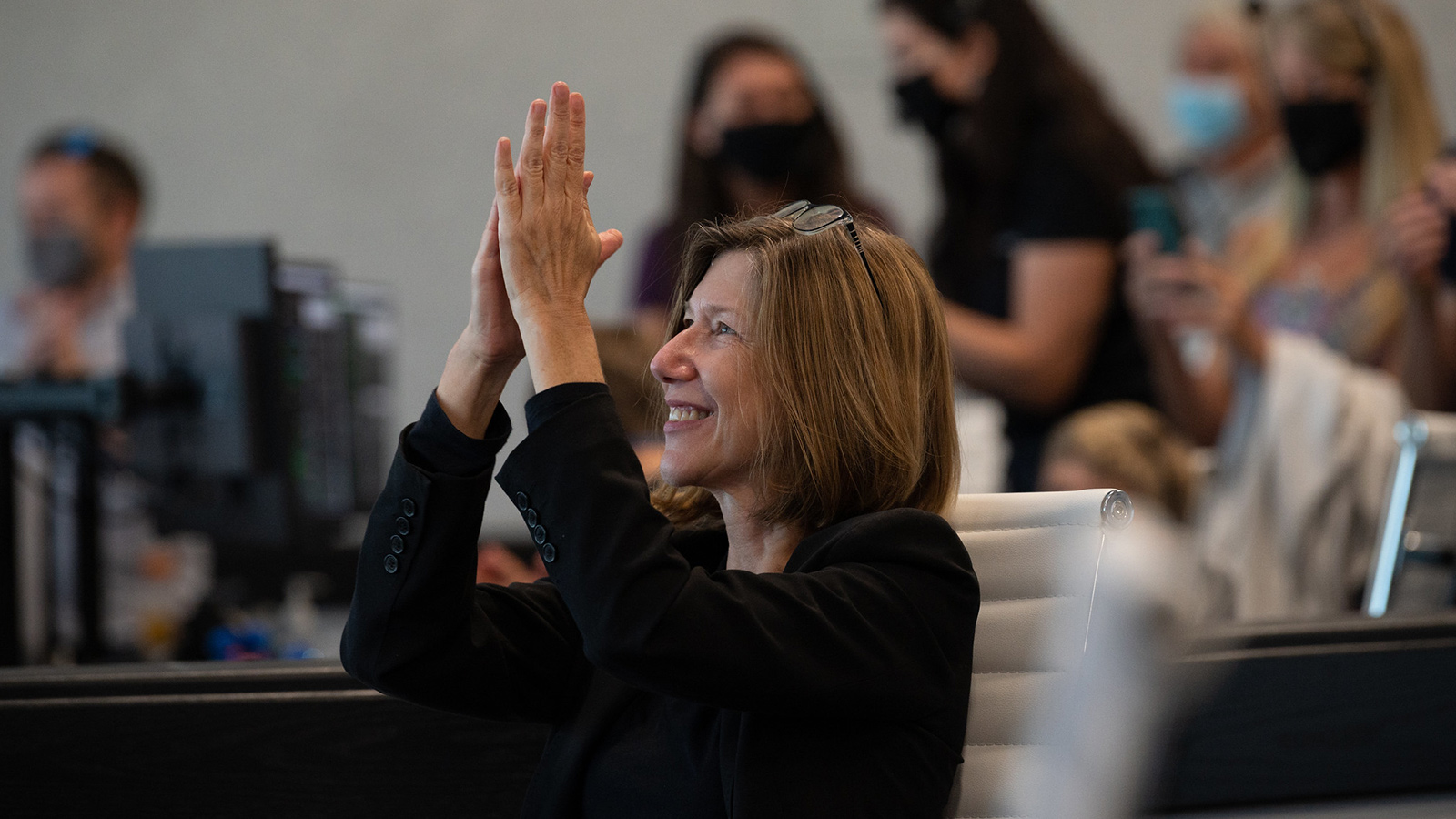Stay Up to Date
Submit your email address to receive the latest industry and Aerospace America news.
Space Launch System team clings to plan for November 2021 debut
Progress toward the first flight of NASA’s Space Launch System rocket, an uncrewed test that would send an Orion capsule around the moon in November 2021, has been beset by late deliveries of parts and modifications to hardware that took far longer than expected.
Now there are new hurdles.
“It doesn’t help at the beginning of the campaign to be using some of your [schedule] margin for hurricanes and covid,” NASA’s Kathy Lueders, chief of human spaceflight, told me in an interview at the virtual AIAA Propulsion & Energy forum. “That makes it a little tough.”
She was referring to Tropical Storms Laura and Marco, whose forecasted winds and rains forced NASA to secure equipment at NASA’s Michoud Assembly Facility in Louisiana, where SLS core stages are built, and pause testing of the core stages at nearby Stennis Space Center in Mississippi. In March, confirmed cases of the coronavirus at Michoud prompted NASA and lead contractor Boeing to suspend work there and at Stennis on the first in a planned series of SLS rockets.
Testing was paused for two months, but Lueders said engineers were far from idle.
“This was a challenging timeframe for us, even without covid,” Lueders said, “but what I’ve been amazed at is they keep figuring out how to continue to work and move toward their goal even as and in during different phases they’ve had to stop and be able to sequester themselves when they uncovered folks that had been exposed” to covid-19.
Lueders said she has joked with her team: “Let me know when the locusts show up.”
In-person work at Stennis resumed in May, and with it the ongoing green run test campaign, green referring to the first time NASA engineers will put the SLS flight hardware through its paces by powering up the core stage for the first SLS flight. The green run culminates in an eight-minute hot fire of the flight model’s RS-25 engines, meant to simulate the first minutes of flight in which the SLS would propel astronauts inside the Orion crew capsule to orbit. That test is scheduled for October.
Before NASA trusts the design to launch astronauts toward the moon in 2024, an SLS must succeed in the inaugural launch and then another SLS must launch astronauts around the moon in their Orion capsule, similar to the Apollo 8 mission that preceded Apollo 11.
Beyond SLS, there is the matter of certifying the SpaceX Crew Dragon capsule for regular flights to and from the International Space Station, the first of which is scheduled for the end of October. The Human Exploration and Operations Mission Directorate led by Lueders is reviewing data from the SpaceX Crew Dragon missions to date and inspecting the capsule that carried astronauts to the station in May and brought them home this month. Boeing, the other Commercial Crew contractor, is preparing to conduct a NASA-mandated additional uncrewed flight of a CST-100 Starliner capsule, after a December uncrewed flight was cut short. Lueders said NASA plans to conduct that flight “by the end of the year, maybe early January timeframe,” and if that schedule holds, launch a crewed test flight to station in mid-2021.
“It’s going to be a busy year for the team,” Lueders said. “We’re really looking to having both systems up and operational by the end of calendar year ’21.”
About cat hofacker
Cat helps guide our coverage and keeps production of the print magazine on schedule. She became associate editor in 2021 after two years as our staff reporter. Cat joined us in 2019 after covering the 2018 congressional midterm elections as an intern for USA Today.
Related Posts
Stay Up to Date
Submit your email address to receive the latest industry and Aerospace America news.




